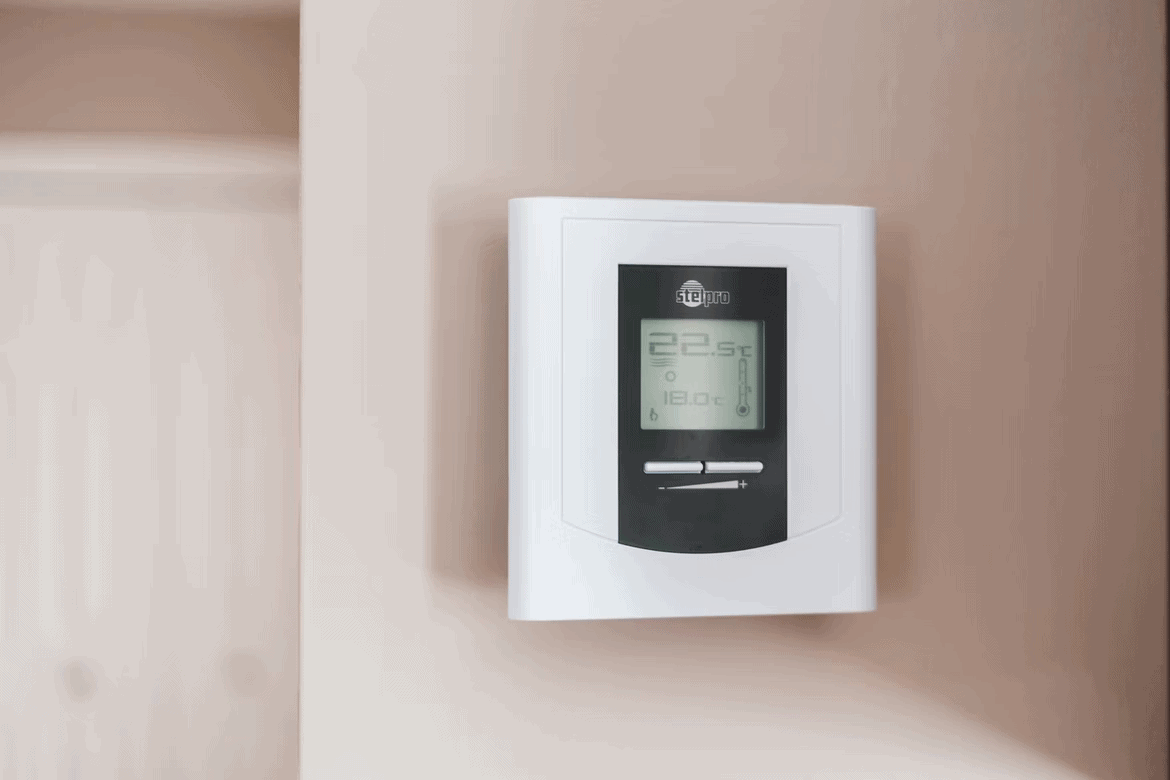Commercial HVAC Installation, Maintenance, and Repair
Building owners, facility managers, and commercial building tenants know the importance of keeping commercial HVAC running: If it gets too hot to...
Floor, wall and ceiling mounted to meet your unique project design.

HVAC systems consume a significant amount of energy in any commercial building or residential high rise.
According to reports from the Department of Energy; heating, ventilation and cooling accounts for 35% of total energy usage - taking up a majority of energy in a building, far more than lighting and major appliances combined.
Without question, HVAC systems serve critical functions. However, HVAC systems aren’t always easy to maintain, unfortunately.
To keep your HVAC system running properly, here are some of the most common HVAC problems and their solutions.
While it’s impossible to predict the exact problems you might encounter, certain residential and commercial HVAC problems occur more frequently than others. Here are five of the most common problems to watch for.
Just like a glass of cold lemonade on a hot summer day, your air conditioner creates condensation. To remove the water created through condensation, your HVAC unit has condensate drain lines that take the water away from the unit and drain it outside your home.
Sometimes, these lines can get clogged, which causes the water to back up and pool inside your unit, resulting in serious damage to the electrical systems or blower motor (located at the bottom of your HVAC unit).
Whenever you run your air conditioning, make sure water is dripping from the end of your drain line. If not, there could be a blockage.
Tips on Unclogging Drain Lines
If your lines are blocked, find the beginning of the drain on the lower part of your HVAC unit. Remove any water in the drain pan (if there’s a blockage, it might be full), and use either compressed air or a water hose to blow the drain line out with a stream of air or water to ensure it’s clear.
When blowing out your lines, always send the air or water away from the unit, never toward it. Otherwise, you may cause even more damage. To ensure that your condensate lines are cleared properly, it is recommended that you make an HVAC service call and have a professional fix the issue.
A continuously running blower fan might not necessarily be a mechanical problem, but it does mean your system is working harder than necessary. There are a few reasons why a blower would run constantly, such as:
To troubleshoot this problem, check that your thermostat isn’t set to “fan on.” You can also turn your circuit breaker on and off to see if it resets the system.
If the problem persists, you may need to call an HVAC technician to find the source of the issue.
An HVAC evaporator is responsible for turning the refrigerant (a heat-absorbing substance) in your system from a liquid to a gas.
Once in the gas state, the refrigerant can absorb the most heat from the surrounding air, helping to cool your building. Evaporator coils commonly get blocked with dirt and debris, preventing air from entering your evaporator and reaching your system’s heat exchanger.
To resolve the issue, clean your evaporator coils with water and detergent. Spray on the detergent and let it sit for a few minutes to loosen the debris. Then, wipe the coils clean with a soft brush or cloth. Remember to be gentle - evaporator coils are easy to bend, which would just be another HVAC problem you’ll need to fix.
The key to HVAC efficiency is airflow. Poor air flow will force the unit to work harder than necessary, increase energy costs and reduce the system’s ability to maintain a steady temperature.
The most common culprit for lack of airflow are dirty filters clogged with dust and debris. The best way to promote airflow is to check and replace your air filters regularly.
According to Energy Star, a program designed by the Environmental Protection Agency and U.S. Department of Energy to promote energy efficiency, it is recommended that you check your filters monthly. This is particularly important during seasons where the HVAC is heavily used, such as summer and winter.
The filter itself should be changed at least every three months. The reason is that an unclean filter will stagnate airflow and force your system to work harder than it needs to in order to cool down or warm up your space, and inevitably wastes energy.
A clean filter will prevent debris or dust from accumulating in the HVAC, which will help mitigate future issues such as costly maintenance or premature system failure.
Indoor air quality (IAQ) is one of the most common commercial HVAC issues and is particularly prevalent with old, outdated systems that can have bacteria and other toxins build up inside of it over time.
A traditional commercial HVAC system is designed to circulate air without allowing too much outside air to enter the building. While it might help with energy efficiency, it also recirculates contaminants and toxins.
Over time, contamination levels can rise to unbearable levels, causing numerous health issues including:
The best way to boost indoor air quality and create a healthy space for occupants is to upgrade your HVAC system to a more IAQ-friendly solution like an underfloor air distribution system (UFAD).
| Is your HVAC system affecting your building’s IAQ? Check out these blogs to learn more: |

UFAD systems are a more environmentally-friendly alternative to traditional HVAC systems. Unlike traditional systems, UFAD systems distribute fresh conditioned air into the lower half of the room called the breathing zone. Old, contaminated air is pushed upward towards ceiling return grilles, then out of the room.
With UFAD systems, conditioned air is introduced at the floor level through multiple diffusers - while old, warmer air is vented at the ceiling to prevent cross-contamination with the new air. This system vents contaminants from the living area, leading to better indoor air quality.
In addition to boosting indoor air quality, UFAD systems are also more cost-effective to install compared to traditional HVAC systems, with lower initial and lifecycle costs overall. Since UFAD systems work with the laws of physics (warm air rises), they also use less energy - up to 30% lower energy usage - resulting in long-term cost savings.
If you keep suffering from common HVAC problems and want to save money and time on repairs, then consider installing a UFAD system in your building.
Contact the experts at AirFixture today to learn how a UFAD system can benefit your project. We’ll create a customized UFAD solution to fit your unique building specs, which is designed to enhance HVAC efficiency and indoor air quality.

Building owners, facility managers, and commercial building tenants know the importance of keeping commercial HVAC running: If it gets too hot to...
Photo: PixabayThe glimmering cityscapes at night might be a sight to behold, but there’s a staggering amount of energy wastage taking place in the...

With the change of seasons approaching, many property managers need a refresher on local heating and cooling regulations. Property managers need to...